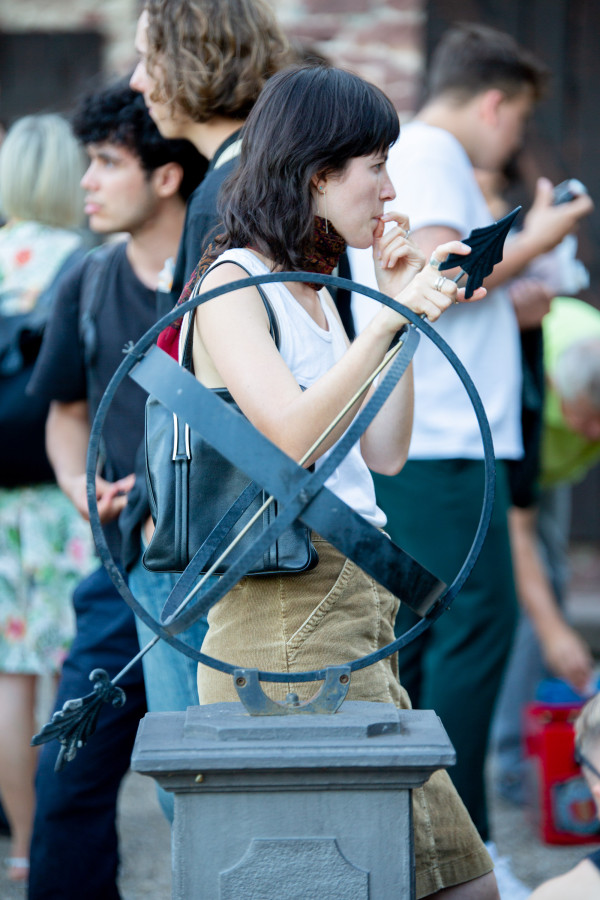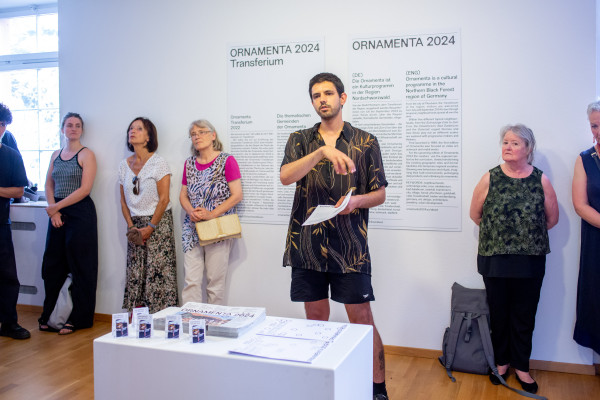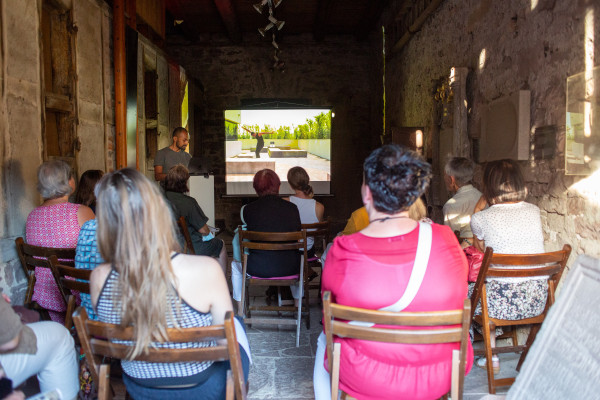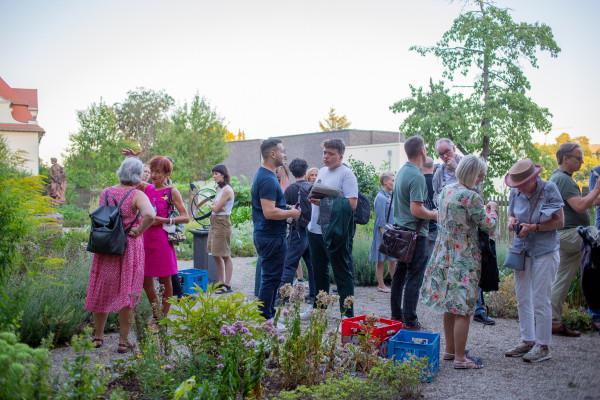In the Solartal, art, and design practices are in conversation with supernatural forces and the inexplicable. Here symbols possess emancipating qualities which can be appropriated by modern everyday life. How can we harness multi-directional temporalities with novel and regenerating qualities in the solar valley?
10. August 2022 – 10. August 2022
- In Maps öffnen
Stadtmuseum Pforzheim
Stadtmuseum PforzheimWestliche Karl-Friedrich-Straße 24375172PforzheimBaden-WürttembergDeutschland - In Maps öffnen
Lapidarium
LapidariumWestliche Karl-Friedrich-Straße 24375172PforzheimBaden-WürttembergDeutschland
Ornamental Time as Sun Dance
Mehr erfahren
Raphael Mürle’s figure theater is ready to answer the phone for curious citizens of the Nord Schwarzwald-region. His attempt at translating the new symbolisms emerging in the sun valley into local dialects trigger awe and imagination in the audience. Then, we collectively activate the Transferium-audioguide in the exhibition spaces. We listen closely to Christine Lüdeke and Deniz Ova speculating on new grammars of conviviality in the thematic neighborhoods of Ornamenta. The area around Nord Schwarzwald is considered one of the most sun drenched regions in Germany. Hidden all over the region one will find different sun clocks decorating various façades of profane and sacred architecture dancing time with the sun. They seem nowadays like echoes from a past when timekeeping emerged from the interplay between natural cycles and sacred geometries which played a significant role in constructing social relations. As industrial society comes of age mechanic time-control machines, symbol of the new technocratic apparatus, move on to secular monuments and commercial spaces pointing to the emergence of a new linear progressive society. Sun clocks, now merely seen as architectural ornaments, slowly fade from their original function as media for a time-orientation which were tightly linked to planetary cycles and spiritual practices. As time-collapse moves forward in the Stadtmuseum the temporary Solartal community is faced with a choice between different temporalities and moving architectures. One group decides to join the speculative architecture project Bureau Babotanik, the other follows art-researcher, performer and writer Kiran Kumar into the Lapidarium, a collection of monumental fragments and grave stones in a barn next to the Stadtmuseum. Baubotanically built architectures manifest a new kind of cultural practice around botanical and interpersonal care in a mode of deep-time awareness. These green chronographs stretch and slow down our time perception as we observe year after year how care-intensive trees and human built structures grow together. These hybrid structures guide us to a new practice of more-than-human entanglements, stabilizing each other over time creating a stable ground for different life-forms. In the Lapidarium, on the other side, linear time is suspended while Kiran Kumar narrates his experiences during a strangely evocative visit to the Sun Temple in Konark in India several years ago. In a subtle but hypnotizing rhythm the audience follows his live archaeology as subtle but gentle entanglements emerge between dance and architecture, between embodiment and environment. Dancing between sacred architectures and sacred groves, a first attempt at articulating entanglements in artistic-ecological-spiritual practices is witnessed by the audience. The Solartal invites us to imagine sacred architectures and collective practices charging them with communal and re-generational capacities. How can we imagine our everyday practices as transactions with eternity, sustainably constructing a fertile ground for new types collective worship? What are future spaces where planetary dances and terrestrial choreographies meet art, science and the spiritual thus bifurcating into liberating templuralities?
Orte
Mitwirkende
- Bureau Baubotanik
- Kiran Kumar
- Raphael Mürle





